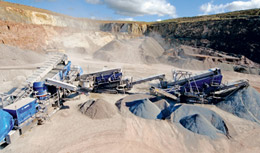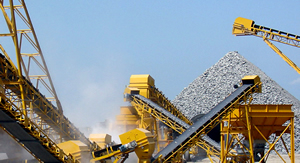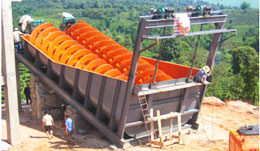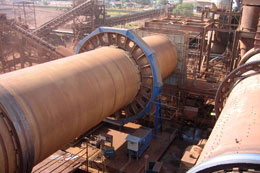-
Sand Making Crusher
- PCL-Vertical Shaft Impact Crusher
- SBM Hydraulic VSI Crusher
- VSI5X Series Impact Crusher
Gravel crushing process
Gravel crushing process

There are two ways always used to remove rock from the earth for crushing : explosives or excavating. Rock can also be natural, gravel or construction waste. Rock is crushed in two or three different phases: primary, secondary and tertiary crushing. In gravel crushing porcessing, there always just tertiary crushing phases, The crushing process often involves one or more phases of screening to separate the different sized gravel varieties.
Different types of crushing units
The footprint of small, stationary rock-crushing plants is about one hectare, medium-sized 2– 3 hectares, and large plants up to 5 hectares. Stationary crushing plants consist of various crushers, feeders, screens and conveyors.
Mobile track-mounted crushers can be moved at a speed of about one kilometer per hour. The parts of mobile crushers used in quarries and contracting include e.g. the crusher, a diesel engine, a generator, a conveyor, a screen and dust- and noise-control systems.

Gravel cone crushers
Gravel cone crushers are generally used after the jaw crusher for secondary and tertiary crushing. But in gravel crushing processing, jaw crusher almost never need, As such, the goal is to produce ballast or fine sand. Gravel cone crushers crush all types of rock but not always recycling materials. we provide CS Series Cone crusher, hydraulic cone crusher, hcs90 cone crusher, spring cone crusher, and Mobile cone crusher. Big primary gyratory crushers are used in mines during primary crushing and in other mining and quarrying applications requiring large capacities.
Crusher output
Small crushers produce 100-300 tons of aggregate per hour, medium crushers 300-600 tons and large crushers 600-1,000 tons per hour. The biggest rock crushing plants can produce more than 2,000 tons of aggregates per hour. It takes 25,000-50,000 tons of aggregate to build an asphalt road that is one kilometer long and ten meters wide.
- Limestone Crusher
- Barite Crusher
- Granite Crusher
- Kaolinite Crusher
- Calcite Crushing
- Tombarthite Crusher Mill
- Bentonite Grinding Plant
- Basalt Ore Crusher
- Lignite Crusher Mill
- Silica Ore Crusher
- Tin Ore Mine
- Lead and Zinc Ore Crusher
- Ochre Crusher Mill
- Garnet Crusher
- Mica Crusher
- Asbestos Crusher
- Manganese Ore Crusher
- Talc Crusher Mill
- Feldspar Crusher
- Iron Ores Crusher
- Dolomite Crusher
- Quartz Crusher
- Gypsum Crusher
- Calcium Carbonate Grinding
- Gravel mining
- Gravel pulverizer
- Gravel washing
- Gravel screens
- Gravel grinding
- Gravel processing
- Gravel quarry
- Gravel crusher
- About Us
- |
- Service
- |
- News & Events
- |
- Contact Us
- |
- Resources
- |
- Showroom
Aggregate Crusher
Artificial Sand Making
Ballast Crushing Machine
Basalt Stone Crusher
Barite Mine Process
Beneficiation Plant
Bentonite Crusher
Bentonite Milling
Calcium Carbonate Crusher
Calcium Carbonate Grinding
Cement Grinding
Concrete Crusher
Coal Crusher
Copper Crusher
Cement Mill
Chrome Mining Process
Copper ore Beneficiation
Coal Processing
Coal Pulvarizer
Feldspar Crushing
Feldspar Grinding
Flotation Machine
Gold Crusher
Gold Mine Equipment
Gold Processing Machinery
Granite Crusher
Granite Crushing Machine
Granite Quarry Equipment
Gypsum Crusher
Gypsum Mining
Gypsum Powder Production
Iron Ore Beneficiation
Iron Ore Crusher
Kaolin Processing Plant
Limestone Crusher
Silica Sand Crusher
Iron Ore Mining Equipment
Cement Production Line
Talc Production Line
Quartz Crushing Machine
Limestone Mining Process
Manganese Benificietion
























